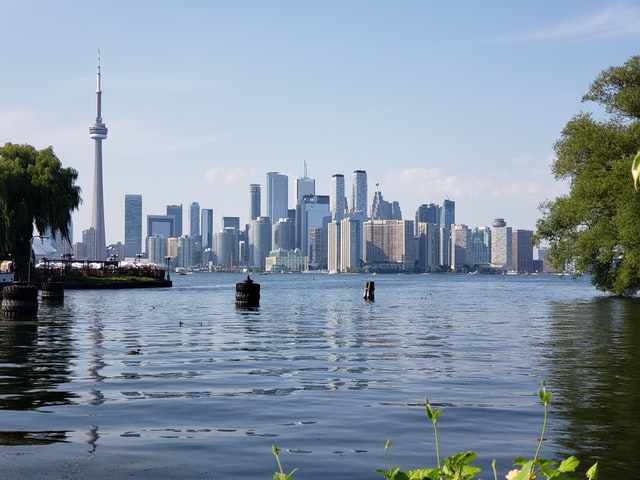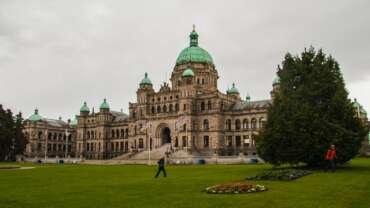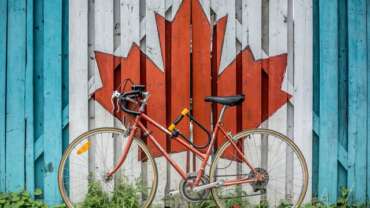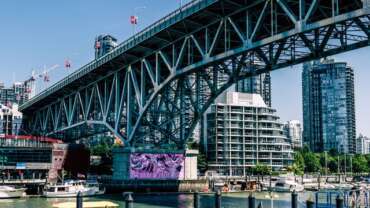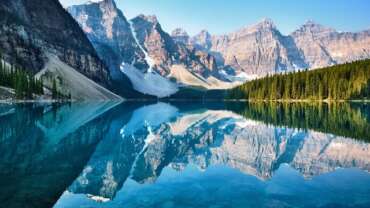Famous Cities in Canada
The best-known cities in Canada cover a range of destination types that reflect the diversity of the inhabitants and range from sophisticated urban locales to more laid-back municipalities. As each city has its own unique personality, Canada offers something for every type of visitor to explore.
Toronto, Ontario
Toronto, is the country’s financial center, with large swaths of distinct populations and neighborhoods that include Greek, Italian, and Korean and the second-largest Chinatown in North America.
Toronto is likely Canada’s best-known city due to the hubbub around the Toronto International Film Festival, the sky-high CN Tower, and major sports franchises like the Blue Jays, the Toronto Maple Leafs, and the Raptors.
In addition to all the urban finery of a major city (museums, great shopping, and live theater), Toronto has ready access to miles of Lake Ontario waterfront and the three rivers that intersect the city provide a respite by way of trails and parks.
Toronto is less than two hours from the U.S. border by way of Niagara Falls.
Vancouver, British Columbia
Vancouver is where the ocean meets the mountains. Aside from spectacular natural beauty, this British Columbia coastal metropolis has a relaxed charm that makes it one of the most popular Canadian cities to visit.
Vancouver is also a gateway to all sorts of nearby adventures, including Whistler/Blackcomb ski resort, and numerous islands off the coast. The city also acts as a port stop for cruise ships that are most often headed to Alaska.
The city is less than three hours from Seattle and boasts an exceptional public transportation system that can take visitors from the Vancouver International Airport to downtown in about twenty minutes.
Montreal, Quebec
Though Montreal is officially a French-speaking city, as is the province of Quebec, many of its residents, especially those in the retail and hospitality industries, also speak English.
Until the 1970s, Montreal was Canada’s economic center and still hosts many important landmarks including 50 National Historic Sites of Canada.
The biggest draw in Montreal is Old Town, a central neighborhood close to the water that has preserved much of its original 17th-century architecture and cobblestone streets and reflects the city’s French influence.
Niagara Falls, Ontario
Niagara Falls, Ontario, on the Canadian side (Niagara Falls, N.Y., is on the U.S. side) has been historically known as a honeymoon destination, attracting millions of newlyweds or just plain passionate couples each year.
In the 2000s, Niagara Falls saw the addition of a new casino resort, which in turn brought more hotels, finer restaurants, shops, and child-friendly attractions as well as big-name stage acts.
There are two main kitschy tourist areas: Fallsview at the mouth of Canada’s Horseshoe Falls and Clifton Hill about a mile away. The two are connected by a promenade that runs along the brink of the Niagara Gorge, featuring tourist stores, a mini-putt, haunted house, Ferris wheel, and more than one water park.
While the promenade is geared towards more garish attractions, the falls themselves are a natural wonder and the Hornblower Boat Cruise brings visitors right into the spray to get a sense of the water’s intense power.
Although the main draw to Niagara Falls, is the waterfalls, the surrounding area also has much to offer. The Niagara wine region, the Shaw Festival, and Niagara-on-the-Lake in the surrounding region all offer a more local, authentic experience.
Victoria, British Columbia
Victoria, the capital city of British Columbia, is located on the southern tip of Vancouver Island and is a charming harbor city that’s a gateway to all the wonderful towns, inlets, coves, and Pacific Ocean scenery of Vancouver Island.
Dating back to the 1840s when the city was established as a trading port, Victoria also has provenance as an aboriginal community, a mining town, and an economic hub. Tourists can still enjoy well-preserved 19th- and early 20th-century architecture, like the Parliament Buildings and the Fairmont Empress Hotel, both of which overlook the city’s iconic Inner Harbor.
Halifax, Nova Scotia
Nova Scotia’s capital city has the amenities of a big city but the charm of a smaller town. The Maritime region is famous for the hospitality of the people, with Halifax rumored to have more bars per capita than any other Canadian city.
Much of the city’s allure can be attributed to an oceanside location, rugged shorelines, sandy beaches, nearby fishing villages, and historic architecture.
Quebec City, Quebec
Quebec City is situated at the most narrow point of the St. Lawrence River and has been awarded status as a UNESCO World Heritage Site, thanks to the historic Old Town section of the metropolis.
Much of the Old Town sits high above the water, capped by the famous Chateau Frontenac, and the area hosts cobblestone walkways, well-preserved 17th-century architecture, and a thriving cafe culture. The section is home to the only North American fortress walls that still exist north of Mexico.
Quebec is a jovial city and manageable in size, especially, for those that stick to exploring the Old Town, though there is plenty more to see. The fun continues year-round with events like Winter Carnival, Summer Festival, and New France Festival luring both locals and tourists.
French is still the prevalent language spoken in Quebec.
Calgary, Alberta
The Old West spirit is alive and well in Calgary, where cowboy hats and line dancing are always in fashion. The Calgary Stampede festival put this Alberta city on the map, but the city’s role as the first Canadian host of the Winter Olympics in 1988 has solidified its place as one of Canada’s top destinations.
Calgary is Alberta’s biggest city and has all the hospitality options such as hotels, restaurants, and other niceties that accompany a flush urban center and has enjoyed great prosperity since the 1990s. Calgary’s proximity to Banff, the Rocky Mountains, ice fields, and other natural sensations are also a big draw to the region.
Ottawa, Ontario
Though Toronto and Montreal are better known, Ottawa is Canada’s capital city. Much of Ottawa’s allure is because it is a thoughtfully designed and pedestrian-friendly city.
The many historic buildings, most prominently the Parliament Building and the Chateau Laurier, are lovingly preserved. One of the most famous landmarks in Ottawa is the Rideau Canal, which cuts through the city and in below-freezing temperatures turns into the world’s biggest skating rink.
Edmonton, Alberta
Edmonton has made a name for itself as a city of festivals, the two most famous being the Edmonton Folk Music Festival and the Edmonton International Fringe Theatre Festival.
The city also has the distinction of being home to the world’s largest shopping mall, the West Edmonton Mall, a massive structure that houses a hotel, roller coaster, and water park.
Edmonton is also known as the Gateway to the North, with ready access to Jasper and the Rocky Mountains as well as Canada’s northern territories, Nunavut, the Northwest Territories, and the Yukon.



